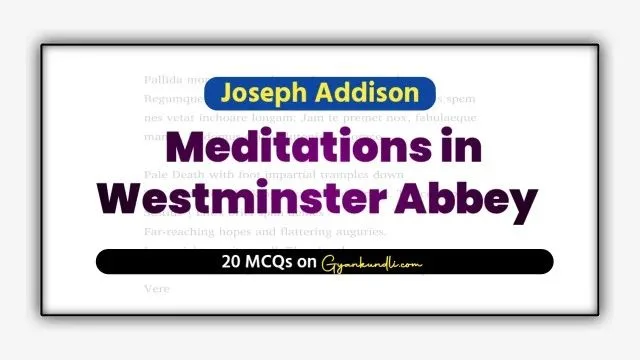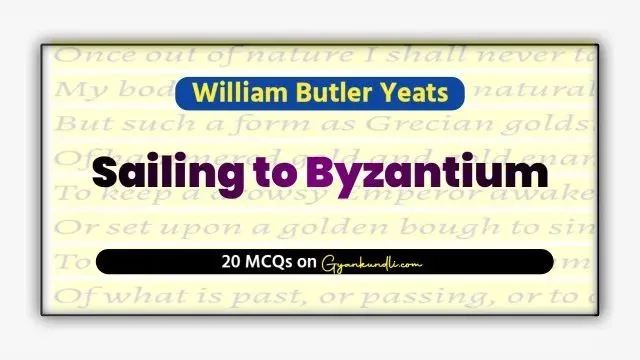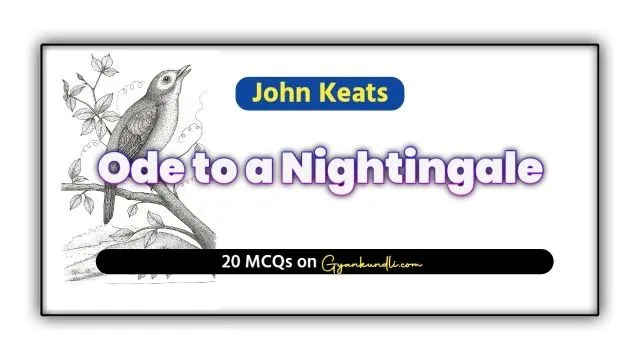Cry the Peacock Questions Answers
1. What is the primary theme explored in Cry, the Peacock?
A. Political corruption
B. Psychological turmoil
C. Economic disparity
D. Religious orthodoxy
Answer: B. Psychological turmoil
Explanation: The novel focuses on Maya’s mental instability and emotional isolation.
2. Who is the protagonist of the novel?
A. Gautama
B. Tara
C. Maya
D. Leela
Answer: C. Maya
Explanation: Maya is the central character whose emotional and psychological journey is central to the plot.
3. How is Maya’s relationship with Gautama best described?
A. Romantic and passionate
B. Warm and supportive
C. Cold and emotionally distant
D. Content and stable
Answer: C. Cold and emotionally distant
Explanation: Gautama is emotionally unavailable, which deeply affects Maya.
4. What symbol is frequently used in the novel to reflect Maya’s inner turmoil?
A. The lotus
B. The river
C. The peacock
D. The moon
Answer: C. The peacock
Explanation: The peacock symbolizes beauty, longing, and Maya’s emotional distress.
5. What mental condition does Maya gradually descend into?
A. Mania
B. Schizophrenia
C. Depression
D. Insanity
Answer: D. Insanity
Explanation: Maya’s fear and emotional isolation eventually lead her into madness.
6. What is Gautama’s profession?
A. Philosopher
B. Doctor
C. Lawyer
D. Poet
Answer: C. Lawyer
Explanation: Gautama is a Lawyer, emotionally distant and focused on detachment.
7. How does Maya perceive nature throughout the novel?
A. As indifferent and cruel
B. As chaotic and disorderly
C. As a source of solace
D. As a symbol of death
Answer: C. As a source of solace
Explanation: Nature brings Maya temporary peace and escape from her suffering.
8. What role does gender play in Maya’s suffering?
A. None of the below
B. Reinforces her authority
C. Empowers her socially
D. Reinforces patriarchal oppression
Answer: D. Reinforces patriarchal oppression
Explanation: Maya is restricted by traditional gender roles and societal expectations.
9. What literary technique is used to portray Maya’s descent into madness?
A. Allegory
B. Stream of consciousness
C. Satire
D. Magical realism
Answer: B. Stream of consciousness
Explanation: Maya’s thoughts and experiences are presented in a fragmented, personal manner.
10. What is Maya’s core fear throughout the novel?
A. Losing Gautama
B. Poverty
C. Death
D. Public humiliation
Answer: C. Death
Explanation: Maya is haunted by a prophecy and her fear of death.
11. What event in Maya’s childhood significantly affects her mental state?
A. Witnessing a death
B. Losing a pet
C. An astrologer’s prophecy
D. A school accident
Answer: C. An astrologer’s prophecy
Explanation: A prediction that a tragic event will happen haunts Maya’s adult life.
12. How does Gautama typically respond to Maya’s emotional needs?
A. With deep concern
B. By ignoring them
C. By encouraging her to seek therapy
D. By confronting her fears
Answer: B. By ignoring them
Explanation: Gautama’s lack of empathy contributes to Maya’s growing instability.
13. What is one of Maya’s main coping mechanisms?
A. Religious rituals
B. Engaging in social events
C. Escaping into nature
D. Writing poetry
Answer: C. Escaping into nature
Explanation: Nature provides Maya with brief relief from her mental suffering.
14. How is the narrative style of the novel structured?
A. Chronological and linear
B. Written in the third person
C. Fragmented and subjective
D. Based on flashbacks only
Answer: C. Fragmented and subjective
Explanation: The story reflects Maya’s disordered mental state and thoughts.
15. What does the cry of the peacock symbolize in the story?
A. Joy and celebration
B. Warning and danger
C. Love and hope
D. Pain and longing
Answer: D. Pain and longing
Explanation: It reflects Maya’s deep emotional pain and unmet desires.
16. What genre does Cry, the Peacock fall under?
A. Historical fiction
B. Gothic horror
C. Psychological novel
D. Science fiction
Answer: C. Psychological novel
Explanation: The book deals with the emotional and mental state of the protagonist.
17. What effect does Maya’s emotional sensitivity have on her?
A. Helps her heal
B. Causes misunderstandings
C. Is ignored by others
D. Makes her vulnerable to breakdown
Answer: D. Makes her vulnerable to breakdown
Explanation: Her heightened emotions make her unable to cope with real life.
18. What does Maya struggle with most in her marriage?
A. Financial problems
B. Social judgment
C. Lack of emotional closeness
D. Infidelity
Answer: C. Lack of emotional closeness
Explanation: The absence of warmth and intimacy troubles her deeply.
19. Which aspect of Gautama’s personality is most damaging to Maya?
A. His humor
B. His indifference
C. His strong opinions
D. His social connections
Answer: B. His indifference
Explanation: He ignores her emotional needs, pushing her deeper into isolation.
20. Why does Maya’s mental state continue to worsen?
A. She takes medication
B. She refuses to speak
C. She is isolated and unheard
D. She travels too often
Answer: C. She is isolated and unheard
Explanation: Her emotional struggles are unacknowledged by her husband or society.
21. What does Maya believe about her own fate?
A. It is full of success
B. It is controlled by Gautama
C. It is doomed
D. It will improve soon
Answer: C. It is doomed
Explanation: The prophecy and emotional neglect convince her of inevitable tragedy.
22. What is Maya’s main desire in her relationship?
A. Material wealth
B. Social status
C. Emotional connection
D. Freedom to travel
Answer: C. Emotional connection
Explanation: She yearns for warmth and understanding from Gautama.
23. What kind of lifestyle does Gautama promote?
A. Emotional openness
B. Spiritual detachment
C. Hedonistic pleasure
D. Romantic expression
Answer: B. Spiritual detachment
Explanation: Gautama believes in detachment, which frustrates Maya’s need for intimacy.
24. What finally pushes Maya over the edge?
A. A public argument
B. An accident
C. The complete emotional gap with Gautama
D. A family loss
Answer: C. The complete emotional gap with Gautama
Explanation: Her isolation and unmet emotional needs cause her collapse.
25. How does Anita Desai use nature in the novel?
A. To reflect social norms
B. To develop political themes
C. To contrast Maya’s emotional world
D. To show India’s economic growth
Answer: C. To contrast Maya’s emotional world
Explanation: Nature offers peace in contrast to her mental instability.
26. What is a major critique presented in the novel?
A. Educational failure
B. Patriarchal oppression
C. Globalization
D. Urbanization
Answer: B. Patriarchal oppression
Explanation: Maya’s suffering highlights the limitations placed on women.
27. Why does Maya avoid discussing her emotions?
A. She thinks they are irrelevant
B. She believes in fate
C. She fears being judged
D. She was raised to hide feelings
Answer: D. She was raised to hide feelings
Explanation: Cultural and familial expectations suppress her expression.
28. What does the novel suggest about illusions?
A. They provide strength
B. They are necessary
C. They are destructive
D. They are harmless
Answer: C. They are destructive
Explanation: Maya’s illusions detach her from reality and worsen her condition.
29. How does Desai portray the role of communication in relationships?
A. As unnecessary
B. As something that can be replaced
C. As essential
D. As a sign of weakness
Answer: C. As essential
Explanation: Lack of communication leads to Maya and Gautama’s emotional breakdown.
30. What is the ending of the novel meant to highlight?
A. Political instability
B. The dangers of city life
C. The cost of emotional neglect
D. Economic inequality
Answer: C. The cost of emotional neglect
Explanation: Maya’s breakdown and final act show the effects of being emotionally ignored.
Read this also : The Vendor of Sweets Chapter 13 Quiz
Discover more from Gyankundli
Subscribe to get the latest posts sent to your email.
















1 thought on “Cry the Peacock Questions Answers : 30 MCQs”